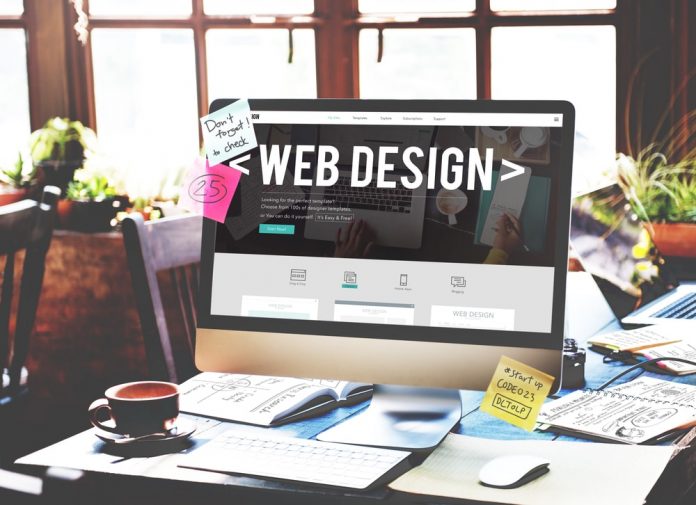 Part of a Series
Part of a Series
By Katie Lundin
A recent study shows that 97% of consumers research their purchases online before they buy something.
Strong, modern web design is vital to your brand’s reputation, your bottom line, and your future.
Don’t take our word for it. 75% of consumers judge the credibility and trustworthiness of your business from your website’s design.
Over the past decade, the 210,000 designers on crowdspring have helped entrepreneurs, businesses, agencies and nonprofits from 100+ countries with custom web design, custom logo design, print design, and even unique company names. We’ve seen many design trends and fads come and go during that time.
Here are 3 hot web design trends that are clearly trending as we enter 2019.
>> To see a full list of web design trends for 2019, read 7 Modern Web Design Trends for 2019.
1. Plenty of white space

Design by crowdspring creative nzweblogo.
Designs with plenty of white space are easier to read and navigate.
Leaving lots of white space also makes it easier to direct focus to the most important elements on the page.
White space is the portion of a page that is left empty. Technically, it doesn’t even have to be white – it just needs to be devoid of copy, graphics or photos.
Packing too many graphic elements or too much information into one small space (no matter how much value they offer) dates your website and makes it less functional.
2. Custom graphic design and illustrations

Illustration by crowdspring creative lamosca04.
If you want to stand out in a crowded marketplace, you must visually distinguish your website from the competition.
You can’t do this if you use generic website templates.
Web templates have improved over the years – they’re now more customizable than ever before. But, they are still templates. And that means that thousands of other websites will use that very same design.
This year, more businesses will embrace a unique, cohesively branded web presence. And, custom design and illustrations are great tools for achieving that goal.

Image courtesy of Basecamp.
Some businesses, like Basecamp, embrace unique custom illustrations to define their brand and differentiate their website.
Illustrations offer space for creativity.
Matching that style with your brand personality and illustrating the right concepts can create a strong impression on your website.
Hand-drawn style illustrations also feel charmingly retro in the midst of all the slick digital design we’ve grown accustomed to.
3. Bright, bold colors and gradients

Design by crowdspring creative Newdesignideas.
Color is one of the most powerful visual communication tools available.
As we pointed out previously:
The right color can improve readership by 40% by making messaging easier to read and more visually appealing. Color is one of the first things our brains perceive from a brand, so it’s often the first thing that pulls us in.
In fact, a study from the University of Winnipeg reveals:
People make up their minds within 90 seconds of their initial interactions with either people or products. About 62‐90 percent of the assessment is based on colors alone. So, prudent use of colors can contribute not only to differentiating products from competitors, but also to influencing moods and feelings…
Choosing the right colors for a website can make the difference between engaged viewers (and conversions!) or nasty high bounce rates.
Not to mention that brands are fighting to differentiate themselves from the competition – bold color choices help them to do that.
Gradients
The web design world has been calling gradients a trend for so long, that they’re more of a standard than a trend.
Modern screen technology is masterful at executing the color blending that is necessary to make gradients look fantastic. But, that’s not why gradients are so popular in design.
Gradients provide subtle visual interest without being too busy.
Gradients don’t compete with text. And, as long as you make wise color choices, they won’t compete with other graphics, either.
When used skillfully, gradients can help draw viewer’s focus to the most important information or calls to action on your website.
Conclusion
Your website is a critical component of your brand, and as your brand and marketing strategy evolves, your site should as well.
After all, your website and your brand should work in tandem. A misalignment can damage not only your brand but also your customer’s trust.
But, the decision to incorporate a trend into your website design should always be determined by whether that trend makes sense for your brand.
Whatever you choose, remember that there are many millions of websites. The only way to stand out is to create a website that’s unique and different.
Katie Lundin is on the customer support team at crowdspring, one of the world’s leading marketplaces for crowdsourced logo design, web design, graphic design, product design, and company naming services. She helps entrepreneurs, small businesses and agencies with branding, design, and naming, and regularly writes about entrepreneurship, small business and design on crowdspring’s award-winning small business blog.
Web design stock photo by Rawpixel.com/Shutterstock







